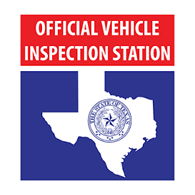As the temperatures drop and the seasons change, driving conditions become unpredictable. Whether you are dealing with morning frost, slick rain, or icy roads, there is one system in your vehicle that matters more than any other: your brakes.
Many drivers wait until they hear a loud grinding noise before thinking about brake repair. However, ensuring your vehicle can stop safely is crucial before the bad weather hits. Here is what you need to know about keeping your car safe and responsive this season.
The Connection Between Cold Weather and Braking
You might wonder, "Do brakes work differently in the cold?" The answer is yes, but it often has more to do with the environment than the brakes themselves.
- Reduced Traction: Cold asphalt provides less grip than warm asphalt. Add rain, snow, or ice, and your stopping distance can double or even triple.
- Tire Hardening: In lower temperatures, the rubber in your tires hardens, slightly reducing their ability to grip the road.
- Moisture Build-up: Temperature fluctuations can cause moisture to accumulate in your brake fluid, which can reduce braking efficiency and lead to internal corrosion.
Because the road provides less help in stopping your car during winter, your brake pads and rotors have to do more work. If they are worn down, you lose the crucial seconds needed to avoid an accident.
5 Signs Your Brakes Need Immediate Attention
Modern vehicles are designed to talk to you. If your car is exhibiting any of the following symptoms, it is time to schedule a brake service inspection immediately:
1. The High-Pitched Squeal
This is the most common sign. Brake pads are designed with a small metal indicator that squeals when the pad material gets too thin. If you hear this, you likely have a short window of time before the damage gets worse.
2. Grinding or Growling
If the squeal turns into a deep metal-on-metal grinding sound, your brake pads are completely worn out. The metal backing plate is now grinding against the rotor. This is a safety hazard and will result in a more expensive repair bill.
3. Vibration in the Steering Wheel
Do you feel a wobble or vibration when you press the brake pedal? This usually indicates "warped" rotors. Uneven rotors prevent the brake pads from making full contact, causing a pulsing sensation that reduces stopping power.
4. The "Soft" or "Spongy" Pedal
If your brake pedal feels squishy or sinks all the way to the floor, you may have air in the brake lines or a leak in the brake fluid system. This is a critical failure that requires immediate professional attention.
5. Pulling to One Side
If your car dives to the left or right when you hit the brakes, you may have a stuck caliper or uneven wear on your brake pads.
What Happens During a Professional Brake Inspection?
Searching for "brake repair near me" is the first step toward peace of mind. When you bring your vehicle into a professional shop, it isn't just about swapping parts. A proper brake service includes:
- Measuring the thickness of brake pads and shoes.
- Inspecting rotors and drums for wear or cracking.
- Checking calipers and wheel cylinders for proper movement.
- Testing brake fluid for moisture content and proper levels.
- Checking the parking brake system.
Don’t Wait Until the First Snow
Brake maintenance is cheaper than an accident. By replacing your pads or resurfacing your rotors now, you ensure that your vehicle is ready for whatever the forecast holds.
If you have noticed any strange noises or just want to be sure your vehicle is safe for your family, contact us today to schedule your brake inspection. Let our certified technicians keep you safe on the road.
Key Takeaways for Drivers:
- Cold weather increases stopping distances, making healthy brakes essential.
- Squeaking, grinding, and vibrations are clear signs of wear.
- Regular inspections can save you money by catching issues before they damage the rotors.
- Always trust professional technicians for safety-critical repairs.



